We all know that cows produce large amounts of greenhouse gases, but are the alternatives really better for the environment?
There are lots of environmental issues associated with producing both dairy and vegan milk including carbon emissions, land use and water consumption.
In this article, we’ll ignore the questions of which type of milk is healthiest and most ethical, and just look at which is best for the environment.
Table of Contents
Cow’s Milk
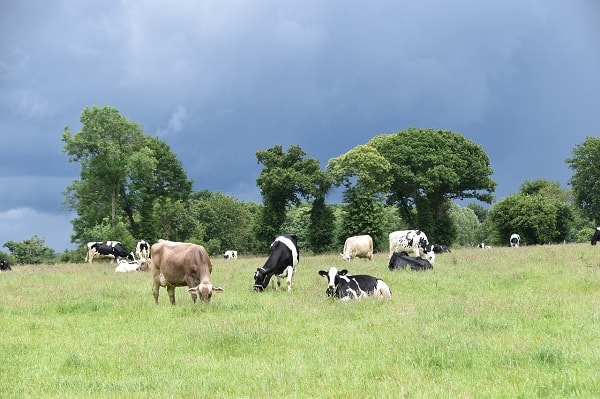
Where does it come from?
Most cow’s milk consumed in the UK comes from the British farms, but some is imported from countries such as Ireland and Germany.
The top milk-producing counties in the UK include Devon, Dyfed and Cumbria, who together produce about 20% of the UK’s milk.
What environmental costs are involved?
Cow’s milk produces the highest amount of greenhouse gas emissions of any type of milk.
A report published by the Food and Agriculture Organization of the United Nations (FAO) in 2010 found that global milk production produced roughly 2.4 kg of CO2 emissions per kg of milk. However, milk production was more energy efficient in Western Europe than other regions of the world, partly because the climate is more suitable for dairy cattle.
The FAO’s report looked at all aspects of the life cycle of dairy milk, including producing and transporting feed, and transporting the end product to supermarkets etc.
As well as carbon dioxide, cows also produce methane and nitrous dioxide, which contribute to global warming.
Dairy milk also requires a huge amount of land that could be used more efficiently to grow crops.
However, dairy milk is one of the most land-efficient types of animal protein, using 33-59 m2 per kg of protein compared to 144-258 m2 per kg of protein for beef (source).
According to Sciblogs, about 1020 litres of water is required to produce one litre of cow’s milk. However, about 99% of the water required for dairy farming in the UK is provided by ‘green water’, or rainwater (source).
Another environmental cost is the plastic used in milk bottles, though it’s still possible to get your milk delivered in glass bottles.
On the plus side, no deforestation is involved in producing dairy milk in the UK, as the land has been used for dairy farms for centuries.
You can make your consumption of cow’s milk more environmentally friendly by buying it from a local farm or getting it delivered in reusable glass bottles.
Verdict
Cow’s milk is probably the least environmentally friendly type of milk.
Goat & Sheep’s Milk

Where does it come from?
Most goat and sheep’s milk consumed in the UK comes from British farms.
What environmental costs are involved?
Like cows, goats and sheep produce greenhouse gases. However, they produce less per kilogram of milk than cows.
This study on goat milk production in New Zealand found that outdoor farms produced 1.03 kg of CO2 per kg of milk, compared to 2.4 kg per kg of cow’s milk in the United Nations report mentioned above.
Goats and sheep are also less picky when it comes to what they eat than cows, which means they can make do with lower quality pastures (land that wouldn’t be very good for growing food crops).
Cows’ manure and urine can get flushed into rivers, presenting a hazard to wildlife. Goat and sheep urine and faeces are much smaller and more evenly distributed.
Verdict
Goat’s and sheep’s milk are more eco-friendly than cow’s milk, but still worse than some of the vegan alternatives. Find out where to get organic and raw goat’s milk here.
Almond Milk
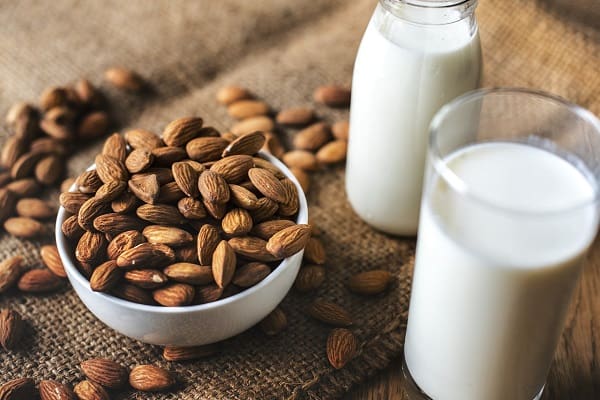
Where does it come from?
Almonds don’t grow in the UK, so most almond milk sold here will be made from almonds grown around the Mediterranean in countries such as Spain and Italy.
Once the almonds are imported, almond milk can be produced in the UK. It’s made by blending almonds with water and then removing the solids.
What environmental costs are involved?
Importing almonds produces greenhouse gases, but the most worrying thing about almond milk is the amount of water and pesticides used in growing almonds.
According to Mother Jones, growing one almond requires 1.1 gallons (about 4.16 litres) of water in California, where most of the world’s almonds are grown.
According to Treading My Own Path, 92 almonds are required to produce a litre of almond milk, so a litre of almond milk requires about 384 litres of water to produce.
However, the high amount of water used is partly due to droughts in California. In Europe, water usage may be lower.
Verdict
Given its high level of water usage, almond milk isn’t not particularly eco-friendly. On the plus side, almonds produce less carbon dioxide and methane than cows and other animals.
Oat Milk
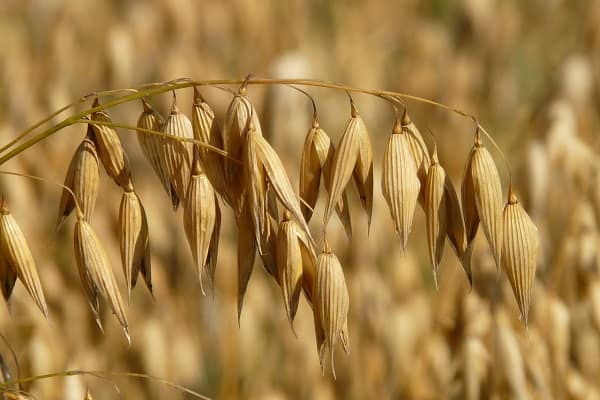
Where does it come from?
The UK produces a lot of oats, but also imports them from countries such as Ireland, Finland and Sweden.
Oat milk is made by soaking oats in water and then pulverising and straining them.
What environmental costs are involved?
Producing oat milk requires land, water and energy. However, it compares favourably to most other types of milk.
According to the Water Footprint Network, shelled or peeled almonds require about six times as much water to grow as oats, making oat milk a more sustainable choice when it comes to water use.
Growing oats can cause soil pollution through the use of glyphosate, the world’s most popular weed killer. Glyphosate is often known by the brand name Roundup, which is made by Monsanto.
Glyphosate is legal in the UK and EU countries, so unless you’re buying organic oat milk it’s likely the oats used were grown using glyphosate. Organic food can’t be grown with glyphosate, though organic produce can become contaminated with it.
Verdict?
Oat milk is one of the most environmentally friendly types of milk. Look for organic oat milk to avoid pesticide and herbicide contamination.
Coconut Milk
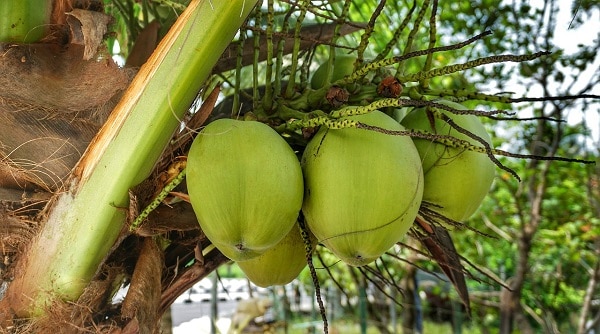
Where does it come from?
Coconuts are a type of tropical fruit that grows in countries such as Thailand, Vietnam, Malaysia, India and Sri Lanka.
Coconut milk is usually made in the country in which the coconuts are grown, and then exported to countries such as the UK. A lot of the coconut milk sold in the UK is made in Thailand.
Coconut milk is made by grating the white part of the coconut and soaking it in hot water. This causes the coconut cream to rise to the top. After skimming the cream off, the liquid is squeezed through a cheesecloth.
What environmental costs are involved?
Shipping coconut milk from the South East Asia to the UK produces carbon emissions, though not as much as if whole coconuts were shipped here first before being made into milk.
Coconuts don’t require a lot of water usage to grow, as they’re grown in tropical regions with naturally high rainfall. Coconut trees also help remove carbon dioxide from the air.
Coconut farming isn’t linked to deforestation in the way that palm oil production is. Choosing Fairtrade and/or organic coconut milk is a good way to ensure some basic environmental protection practices are being followed.
Verdict
Coconut milk is a relatively green option except for the carbon emissions produced while transporting it across the world.
Soy/Soya Milk
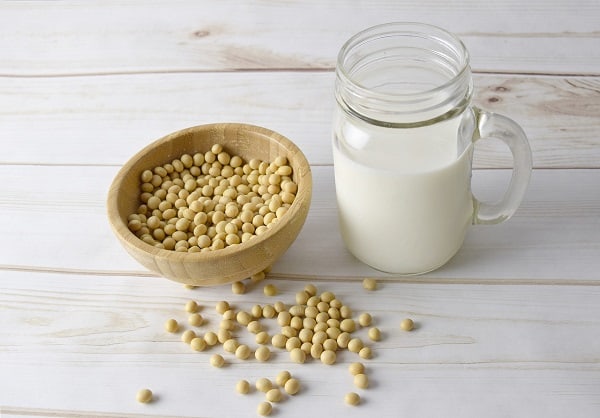
Where does it come from?
Soya milk, which is the same thing as soy milk, is made by soaking and grinding soybeans, boiling the mixture and then filtering it.
The world’s biggest soybean producers include the USA, Brazil and Argentina. Most soya milk sold in the UK is made in the EU using imported soybeans.
What environmental costs are involved?
Transporting soybeans to Europe involves producing carbon emissions.
According to soya milk manufacturer Alpro, their soya milk uses “2x less land, 4x less water and create 2.5x less CO2” than cow’s milk.
Soybean cultivation was one of the biggest contributors to deforestation in the Amazon, but according to Greenpeace, soybean-related deforestation has reduced greatly since 2006 due to a moratorium agreed by soybean traders to not by soy grown on lands deforested after July 2006.
While some progress has been made to ending soybean-related deforestation in the Amazon, soybean cultivation is still contributing to deforestation in countries such as Argentina and Paraguay.
However, only a tiny percentage of soybeans are used to make soya milk. A much bigger percentage is used to make feed for cows, so it’s actually increased demand for meat and dairy milk that is driving the demand for soybeans.
Soybeans are often grown using pesticides, which can contaminate the soil and water supply.
Verdict
Depending on where the soybeans are sourced from, soya milk could be contributing to deforestation. Transporting soybeans from the Americas to Europe also produces pollution.
Choosing soya milk made from soybeans grown in the USA or Ukraine (one of the closest soybean big producers to the UK) will reduce its environmental impact.
Rice Milk
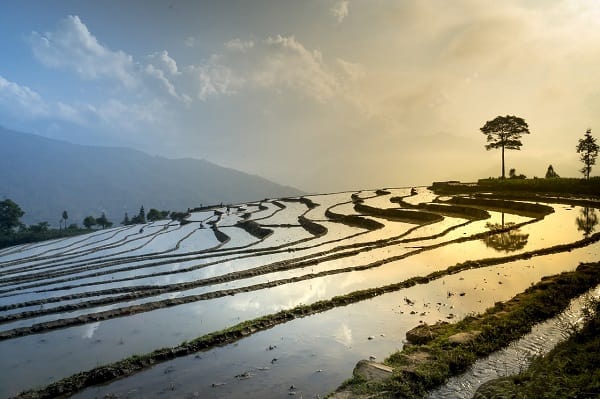
Where does it come from?
Rice milk is usually made from brown rice. Most rice milk sold in the UK is made in the EU using rice imported from countries such as China, India and Indonesia.
What environmental costs are involved?
Producing rice milk requires a lot of water, but not as much as almond milk. It requires more water than soya milk and oat milk according to data cited by the BBC.
Transporting rice from Asia produces a significant amount of carbon dioxide. According to this Oxford University study, it produces more greenhouse gas emissions than soya, oat and almond milk, though not as much as dairy milk.
Bacteria in flooded rice fields also produce methane. Due to the huge scale of rice farming worldwide, rice farming is one of the biggest manmade sources of methane.
Rice production also requires large amounts of nitrogen-based fertilisers.
Verdict
Among non-dairy milks, rice milk performs quite poorly in both water usage and greenhouse gas emissions.
Hemp milk
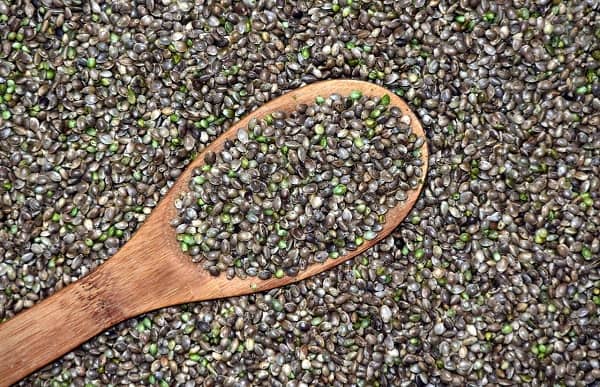
Where does it come from?
Hemp milk is made by blending water with hemp seeds. While hemp is technically a variety of cannabis, you won’t get high from drinking hemp milk! Hemp contains 0.3% or less THC content by dry weight, so it’s non-intoxicating.
Hemp grows well in the UK’s climate, and has been grown in this country since Roman times. However, you need a special licence to grow the plant due to the legal status of cannabis.
What environmental costs are involved?
Compared to most crops, hemp has little impact on the environment. In fact, its environmental impact can even be considered net positive.
Hemp is naturally resistant to most pests, and can be grown without herbicides. It also acts as a carbon sink, absorbing carbon dioxide from the atmosphere and storing it the fibres it’s used to produce. Hemp absorbs more carbon dioxide than trees, though it’s difficult to make a direct comparison since hemp plants have a shorter lifespan.
Since hemp milk is made from excess seeds while the rest of the plant is used for other things such as making clothes, producing hemp milk doesn’t require extra land.
Buying hemp milk supports the hemp textile industry, which is better for the environment than cotton or polyester. According to this report prepared for the BioRegional Development Group and WWF Cymru, “Hemp represents the lowest Ecological Footprint of the three textiles”.
Verdict
As long as you’re buying hemp milk made from hemp grown relatively locally, it’s a very environmentally friendly option.
Another benefit of hemp milk is that it’s quite healthy—it’s a good plant-based source of omega-3 and omega-6, making it a good choice for vegans.
Hemp is a strong natural fibre that can be used as an eco-friendly alternative to nylon and polyester, so it could be part of the answer to our addiction to synthetic plastic-based clothes.
Pea milk
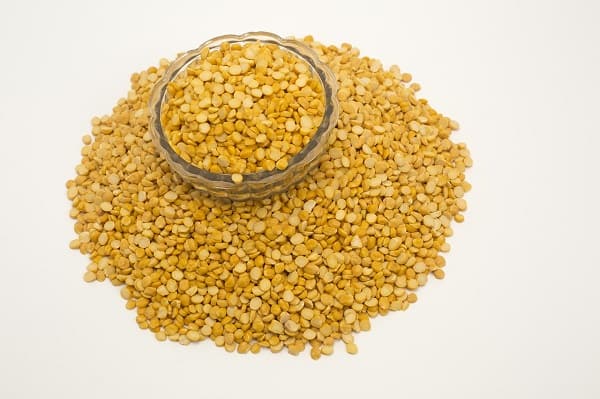
Where does it come from?
Pea milk is the newest vegan milk to hit the shelves in the UK, first going on sale this year (2019). It’s made from yellow split peas rather than green peas, and thankfully doesn’t taste like peas!
To make pea milk, the peas are milled into flour. Next, the protein is separated, purified and blended with other ingredients such as sunflower oil and water.
What environmental costs are involved?
Yellow split peas can be grown in the UK, so international transportation isn’t required. However, there aren’t many pea milk brands on the market right now, so it might be hard to find one that produces its milk in the UK.
This study produced for pea milk manufacturer Ripple concludes that pea milk products results in eight times less greenhouse gas emissions than almond milk production. However, this study isn’t completely neutral since it was funded by Ripple. Greenhouse gas emissions associated with pea milk are similar to those for soy milk.
Verdict
Pea milk has a similar environmental impact to soy milk, but without needing to be imported from abroad. Since it’s a new product, there haven’t been many studies on this milk’s environmental impact.
Cashew milk
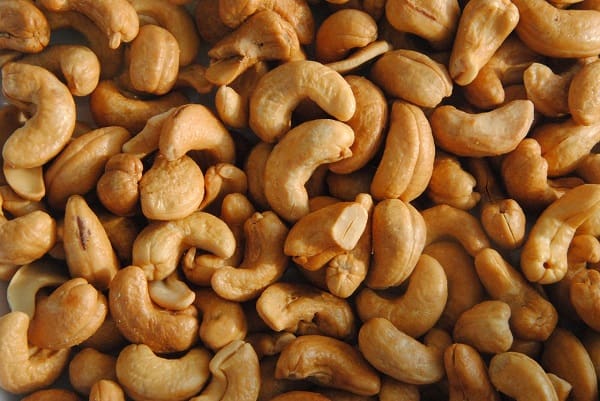
Where does it come from?
Cashews don’t grow in the UK, so they need to be imported from countries such as Brazil, India and Vietnam.
Like almond milk, cashew milk is made by blending the nuts with water and then sifting out the solids. Usually a small amount of sea salt is added.
What environmental costs are involved?
Cashew trees are generally considered quite good for the environment, since they absorb carbon dioxide and provide a habitat for wildlife.
However, since cashew nuts only grow in the tropics, they require a substantial amount of transportation to be brought to the UK.
The cashew industry has also become quite controversial due to working conditions in countries such as India and Vietnam, where workers discard the outer layers of cashew apples by hand, exposing themselves to dangerous corrosive acids.
Verdict
Cashew milk has a very similar taste and texture to almond milk, and it doesn’t require as much water to produce. However, cashews need to be imported from the tropics, and there are concerns about working conditions.
Conclusion
If you live in the UK, the most environmentally friendly types of milk are probably organic oat milk and hemp milk. Here’s a quick summary of why they’re good options:
- Oat milk: Oats require little transportation, aren’t very water-intensive and don’t produce large amounts of carbon dioxide or methane.
- Hemp milk: Every part of the hemp plant can be used, and hemp can be grown in the UK without herbicides.
However, the environmental friendliness of a milk really depends on the details of how it’s produced and how the raw materials are sourced.
For example, if you live within walking distance of an organic farm and get raw, unpasteurised dairy milk directly from there, that will be more eco-friendly than buying processed soya milk made from plants grown in deforested areas of the Amazon basin.
If you live in a country that produces coconut milk, that could also be a very eco-friendly option.
One thing to bear in mind is that vegan milks usually have several added ingredients such as vegetable oils which may have their own environmental costs.
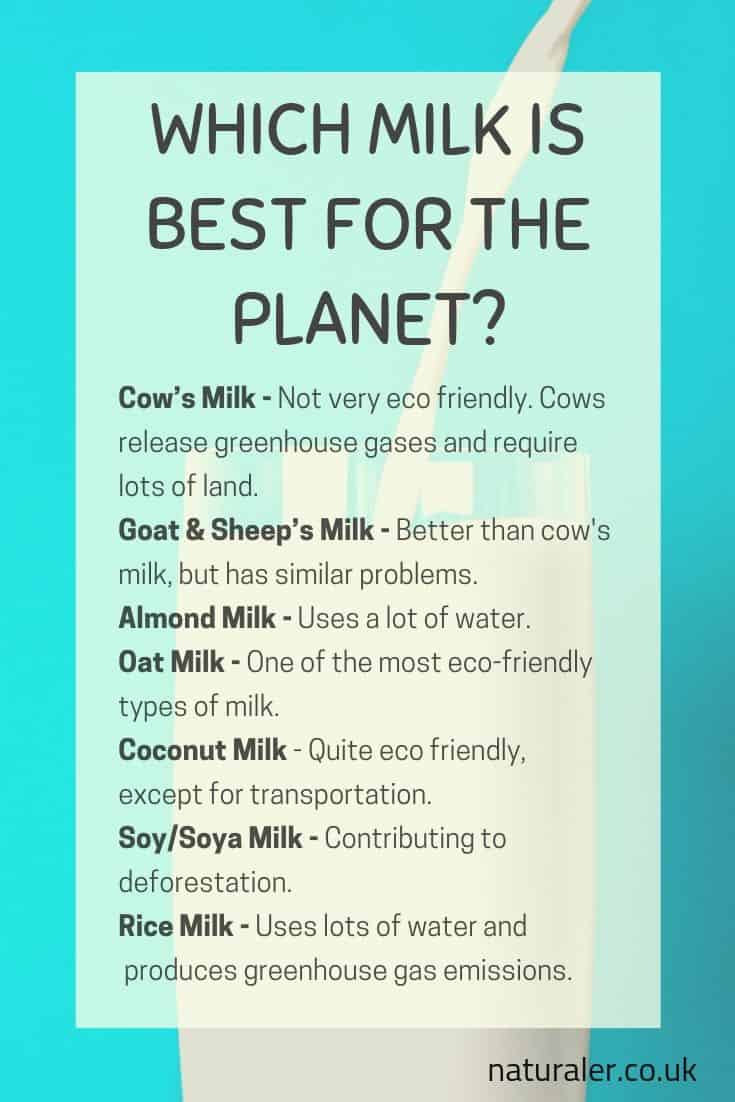

Laurence is the founder and editor of Naturaler. He’s been working in the online world for over 5 years and is trying to live a more natural and eco-friendly lifestyle every day.

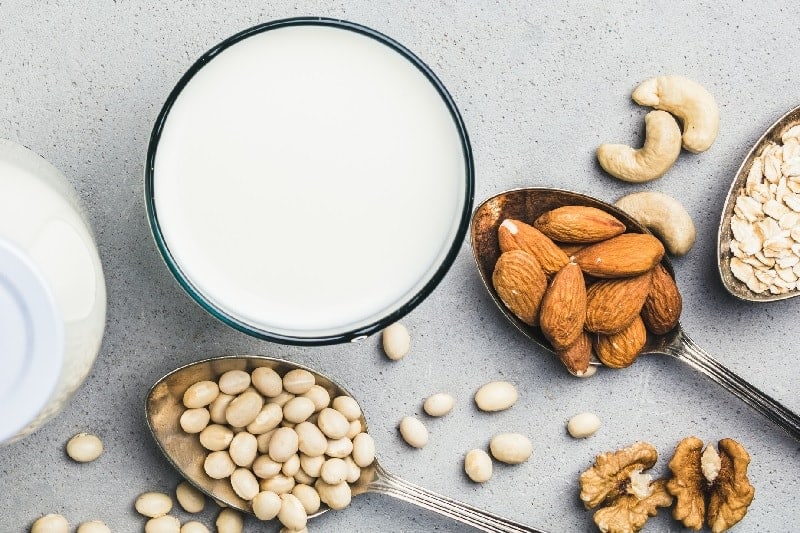
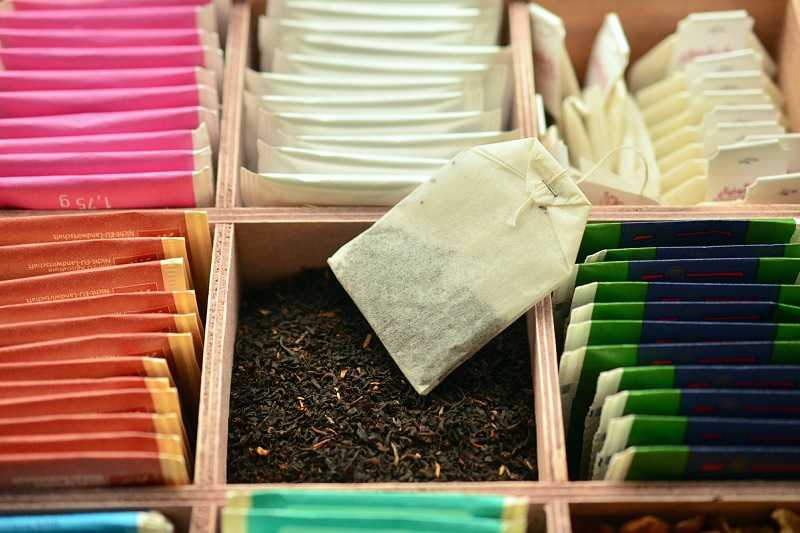

Thank you for this, I’ve always wondered. Luckily, my favourite, oat milk comes out on top! What about the ‘barista’ version of it produced these days? It’s got a lot more ingredients…..